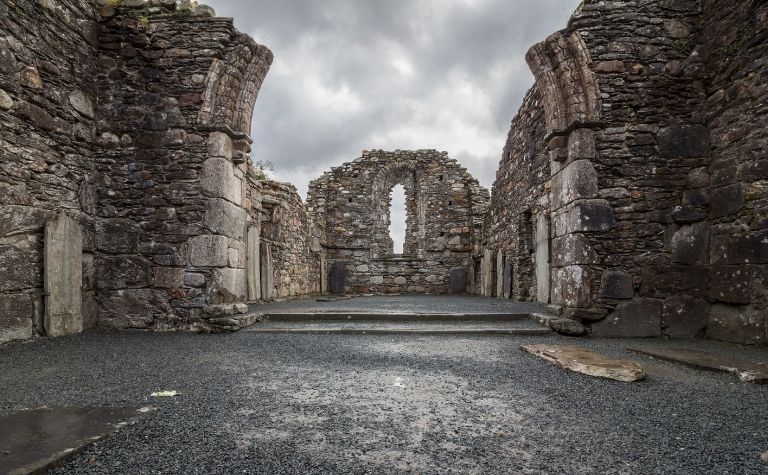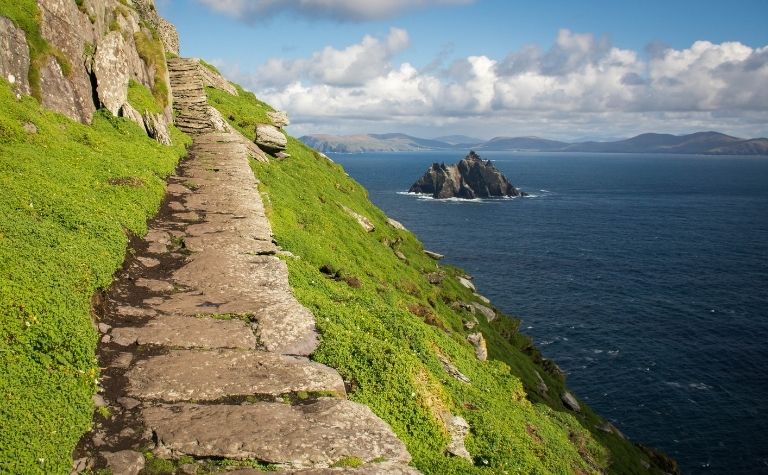Celtic and Nordic ethnic groups came into contact with one another around 1000 B.C. The Nords and Celts share many artistic styles, including knotwork.
It is likely that Celtic and Nordic cultures exchanged ideas, but did they also share religious beliefs?
The Irish did not believe in Norse gods, although some of the deities between the two ethnic groups appear to be similar.
The similarities between Celtic and Nordic mythologies are most likely due to cultural exchange between the two groups.
Although the Irish Celts and Nordic Vikings appear to have similar cultural and religious beliefs, they are not the same. Celts and Nords are both Indo-European, but they speak different languages and have different religious beliefs.
Also, see Do People Still Believe in Valhalla? to learn more.

What Gods Did the Ancient Celts Worship?
Unlike the Norse pantheon, the Celtic pantheons are not wholly known. [1] This is because there are very few written records of Celtic mythology before the Celts converted to Christianity and from before the Interpretario Romana.
The ancient Celts worshipped the ‘Tuatha Dé Dannan’ – a mighty clan of gods. [2]
Their pantheon consisted of many deities. Historians have come to know of a few of them through oral traditions and the mythology passed down through the generations.
Among the deities, Lugh, Brighid, Badb, Esuss, and Dagda are the most well-known gods that the ancient Celts worshipped, but there could be hundreds more. [3]
- Lugh Lámhfhada – or Lugh ‘Long Arm’ (also known as The Fierce Striker, Skilled In All Arts and The Skillful Hand), is a sun god. He is associated with ravens and thunderstorms. He is the father of the warrior Cú Chulainn.
- Brighid – also known as Brigid, is the ‘Triple Goddess’ of the hearth and home. She is associated with healing, spring, animals, poetry, and smithcraft.
- Badb – a supernatural demon.
- Esuss – which means ‘crow,’ is the goddess of enlightenment, inspiration, life, and wisdom.
- Dagda – is the Tuatha Dé Danann leader, and the father of Aengus, Bodb Derg, Cermait, Midir, and Brigit.
The Lesser-Known Celtic Gods
- Aengus – also known as Angus or Oengus of the Bruig, is the son of Dagda and the river goddess Bionn. He is associated with youth and love.
- Cernunnos – or ‘The Horned One.’ He is associated with animals, forests, fertility, and wealth.
- Cú Chulainn – one of the heroes in Celtic mythology. He was initially named Setana.
- Queen Medb – the Queen of Connacht. She is said to be buried at the top of Knocknarea in Sligo.
- The Cailleach – one of the oldest and most powerful beings in Celtic mythology. She’s also known as the Hag of Béara. She can control the weather and the seasons.
- The Morrigan – also known as Morrígu and Morrighan, is the goddess of fate and war. She is the “Phantom Queen” or the “Queen of Demons.” [4]
- Epona – the goddess who protects beasts of burden, such as horses, donkeys, and mules.
- Ana – also known as Danu or Dana, is the goddess of nature and the mother of the Tuatha Dé Danann. She symbolizes regeneration, wisdom, death, and prosperity.
- Belenus – a sun god, also known as Belenos, Bel, and Beli Mawr.
- Toutatis – also known as Teutates, was an important deity. His name means ‘God of the People.’
- Taranis – a ‘triple’ god of thunder. Taranis formed a triad with Toutatis and Esus.
- Ogmios – also known as Ogma, is associated with persuasion and eloquence.
Also, see What is the Valkyrie Symbol in Norse Mythology? to learn more.

Did the Vikings Believe in Norse or Celtic Gods?
It is probable that a cultural exchange took place between the Celts and the Vikings and that they even drew inspiration from each other’s beliefs.
But were the Vikings influenced by Celtic mythology to the point of appropriating their deities?
The Vikings believed in Norse gods. Norse mythology is polytheistic, predates Christianity, and originated in Scandinavia.
The Vikings’ belief system strongly revolves around dying honorably in battle and that warriors will earn a place with Odin in Valhalla in the afterlife.
Vikings believed that the Norse god Odin is the creator of the earth and all living creatures. They also believed that the Norse gods, Ymir, Thor, Ullr, Odin, Balder, and Freya, protect and watch over them during battle.
How Are Norse and Celtic Mythology Similar?
The Celtic and Nordic peoples are two different Indo-European cultures and language branches, and they went on to form their own different beliefs and mythologies.
The similarities between Celtic and Norse mythology are that both ethnic groups are polytheistic, and they share a few similar deities, tropes, and motifs in their mythology.
Both cultures also believed in an afterlife, revered their gods, and sought to seek their favor.
However, it is unclear if the similar deities and themes in their mythologies were purely coincidental or if they arose from “cross-pollination” (cultural exchange) when the two ethnic groups came into contact around 1000 B.C.
Also, see Why Do Soldiers in the Military Say “Until Valhalla”? to learn more.
Norse Thor and Celtic Dagda – Gods of War
- Both Gods are described as being strong, thickset, and good-natured.
- Thor and Dagda are both gods of battle and virility. They are also depicted carrying a club or hammer as their weapon of choice in battles.
Norse Wodan and Celtic Cernunnos – Gods of the Wild Hunt
- Wodan in Norse mythology and the Celtic God Cernunnos are both associated with the wild hunt.
- Cernunnos and Odin (Wodan) have both been depicted with horns and have strong associations with animals.
Norse Odin and Celtic Lugh – Gods of War and Lightning
- Both Norse Odin and Celtic Lugh wield a magic spear and are associated with ravens.
- Odin is also known as “The Allfather,” Lugh is the father of all gods in the Celtic pantheon. [5]
- Both Odin and Lugh are gods of intellect and poetry.
Nuadhu and Scathach and Njord and Skadi
There are two classifications of Norse Gods in Norse mythology – the Aesir (the “modern Gods”) and the Vanir (the “old” Gods). [6]
Another interesting parallel between Celtic and Norse mythology is that two of the Vanir Gods, Njord and Skadi, appear to be Norse translations of the Celtic names Nuadhu and Scathach.
Conclusion
Cultural exchanges could explain why Celtic and Norse gods have similarities, but they are still two separate and distinct mythologies.
References:
[1] Source
[2] Source
[3] Source
[4] Source
[5] Source
[6] Source
